The research project of Vassiliki Lianou entitled “SPIAGGIA Shifts of perception in the interaction between the natural and the artificial” was presented in September 2017 at the Department of Architecture of University of Thessaly and was supervised by Evelyn Gavrilou and Alexandros Psychoulis.
-text by the author
This current research deals with the phenomenon of transformation of the Spiaggia beach, in the prefecture of Ilia, while examining the relationships that develop between the natural and the artificial environment. More specifically, it is a «built» strip along the beach where you can encounter dozens of half-ruined and destroyed by the sea former holiday resorts, which create a unique setting combined with the natural scenery that surrounds them.
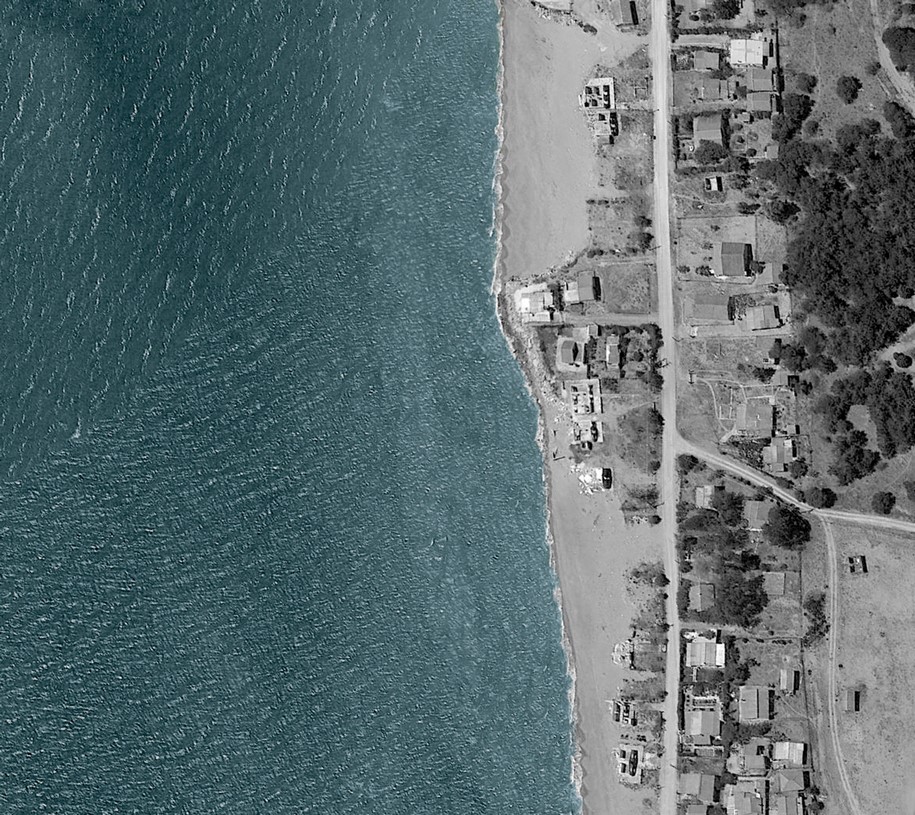 The coastal zone of the prefecture of Ilia, mainly from Katakolon and about 20 km southwards is one of the most representative examples of illegal building for the construction of holiday accommodation in Greece, with the arbitrary installation in the region making its own history.
The coastal zone of the prefecture of Ilia, mainly from Katakolon and about 20 km southwards is one of the most representative examples of illegal building for the construction of holiday accommodation in Greece, with the arbitrary installation in the region making its own history.
This installation began timidly and temporarily. The summer vacationers, local residents, built huts by using cheap materials and with a limited lifetime, which were set up by the beginning of the summer and were restored at the end of the holidays. Gradually though, over the years, the cheap and lightweight materials were replaced by more resistant ones, giving the constructions a more permanent and indestructible, by nature and time, character.
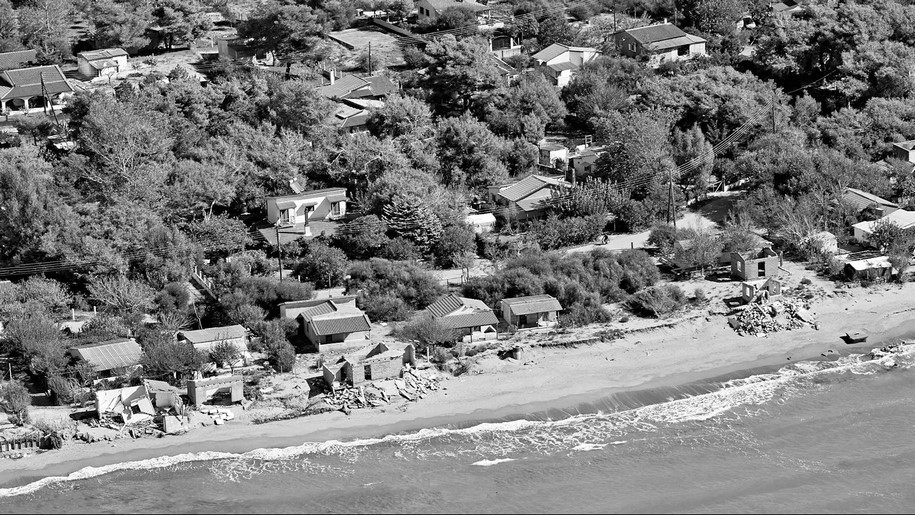 Nevertheless, the life cycle that once characterized the temporary shelters, now features the permanent buildings of the beach. Year in year out, the location of the shoreline is constantly changing and the sea comes to shore, tending to occupy the sandy part of the beach. Many holiday accommodations have been destroyed, whilst many are in danger of extinction in the near future, as nature seems to resist unscrupulous human intervention.
Nevertheless, the life cycle that once characterized the temporary shelters, now features the permanent buildings of the beach. Year in year out, the location of the shoreline is constantly changing and the sea comes to shore, tending to occupy the sandy part of the beach. Many holiday accommodations have been destroyed, whilst many are in danger of extinction in the near future, as nature seems to resist unscrupulous human intervention.
The materials that were once considered resistant, are now worn and destroyed, weak to survive the forces of nature.
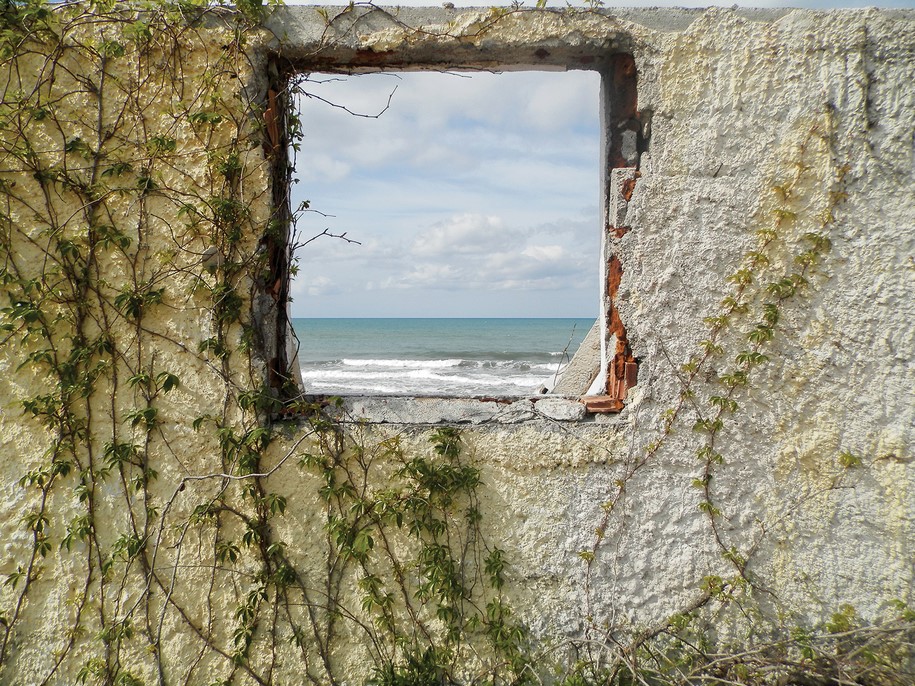 The view of these «modern ruins» fascinates the traveler of the beach and provokes feelings of awe, while the power of nature against the arbitrary facilities of the tourists and its attempt to return to its original form through its purification from the material interventions lead to a series of questions that attempt to explore the scope of this research.
The view of these «modern ruins» fascinates the traveler of the beach and provokes feelings of awe, while the power of nature against the arbitrary facilities of the tourists and its attempt to return to its original form through its purification from the material interventions lead to a series of questions that attempt to explore the scope of this research.
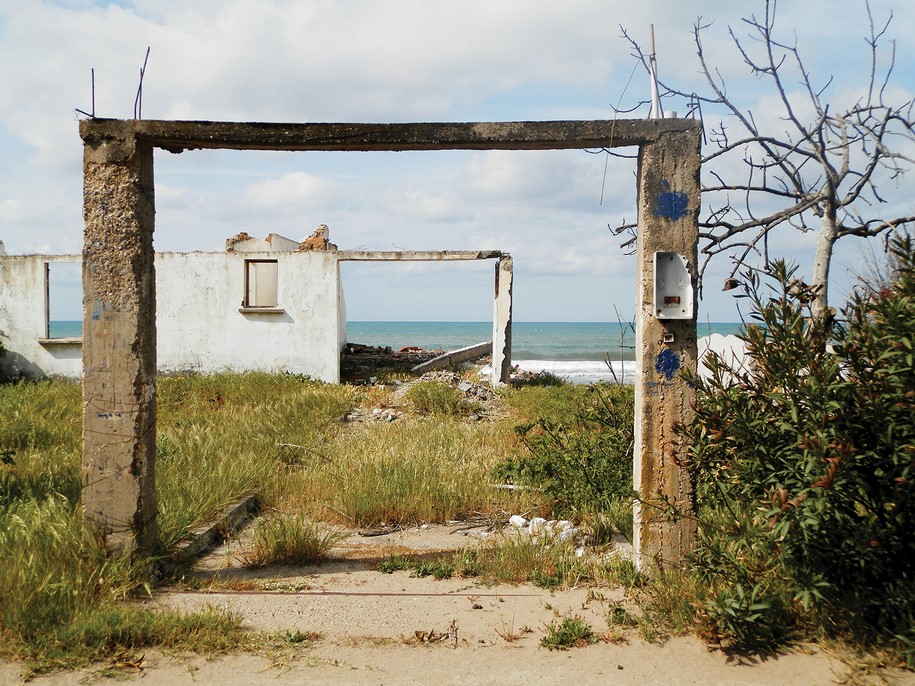 The research is being conducted alongside two speeds and two observation scales that displace us from the shoreline, to the coast, the beach and the individual shells lying on the sand, with each one of these places emerging different issues for study.
The research is being conducted alongside two speeds and two observation scales that displace us from the shoreline, to the coast, the beach and the individual shells lying on the sand, with each one of these places emerging different issues for study.
The gaze is shifted from the high view, through the use of the satellite, to the experiential view as well as the relationship between them, studying the same condition in two different ways: the prevalence of the natural element against the artificial one, while at the same time dialogues are being developed between art and architecture.
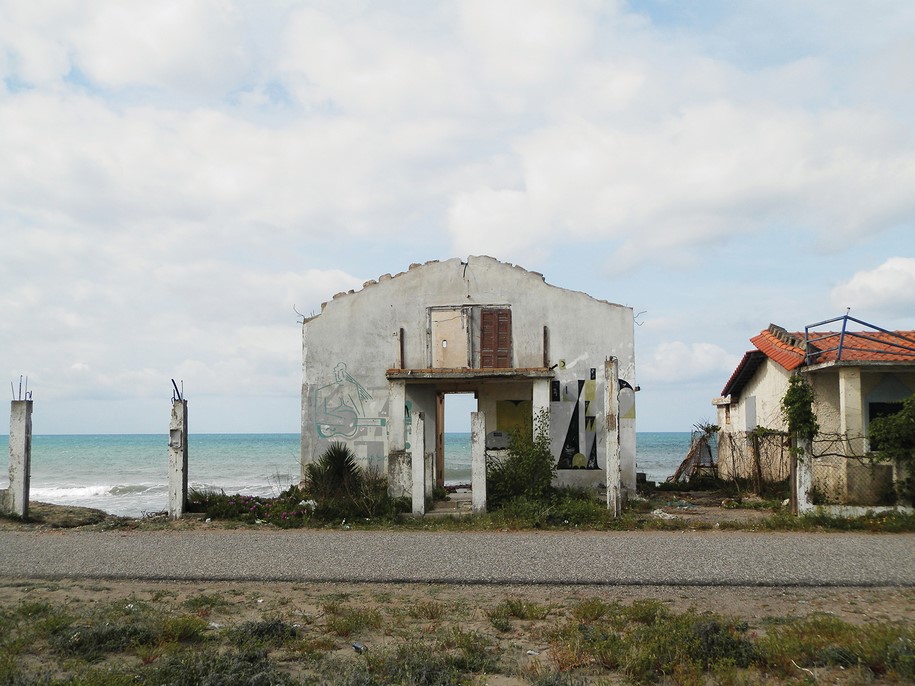 A survey is being carried out on the history of Spiaggia beach and the reasons that led to the seclusion of the beach from loose huts to more permanent constructions, while at the same time there has been an attempt on-site research on the beach, capturing a grid of translocations and referrals, reflections on nature, landscape, the relationships that develop between the natural and the artificial, as long as the reflections on the notion of building, arbitrary building and ruins.
A survey is being carried out on the history of Spiaggia beach and the reasons that led to the seclusion of the beach from loose huts to more permanent constructions, while at the same time there has been an attempt on-site research on the beach, capturing a grid of translocations and referrals, reflections on nature, landscape, the relationships that develop between the natural and the artificial, as long as the reflections on the notion of building, arbitrary building and ruins.
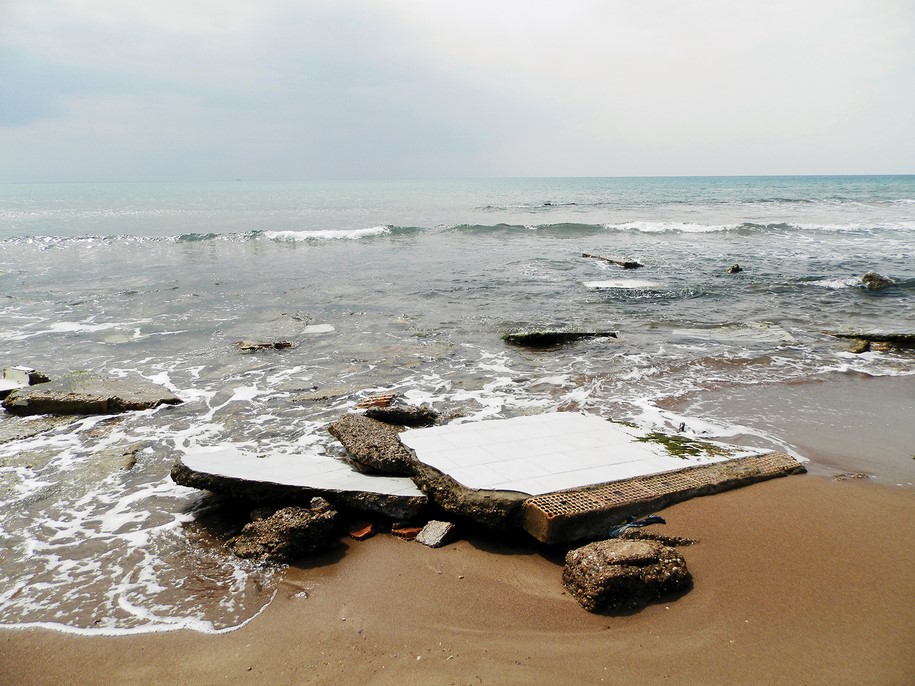
The empirical material is offered by the building corpses located in the sand, which create dynamic scenery on the sandy beach of Spiaggia.
Facts
Title SPIAGGIA Shifts of perception in the interaction between the natural and the artificial
Student Vassiliki Lianou
Supervisors Evelyn Gavrilou, Alexandros Psychoulis
School University of Thessaly department: School of Architecture
Date September 2017
–
Η ερευνητική εργασία της Βασιλικής Λιανού με τίτλο ‘SPIAGGIA: Μετατοπίσεις του βλέμματος στις σχέσεις φυσικού και τεχνητού’ παρουσιάστηκε το Σεπτέμβριο του 2017 στο Τμήμα Αρχιτεκτόνων Μηχανικών του Πανεπιστήμιου Θεσσαλίας με επιβλέποντες καθηγητές την Έβελυν Γαβρήλου και τον Αλέξανδρο Ψυχούλη.
-κείμενο της δημιουργού
Η παρούσα ερευνητική εργασία πραγματεύεται το φαινόμενο μετασχηματισμού της παραλίας της Σπιάτζας, στο νομό Ηλείας, εξετάζοντας παράλληλα τις σχέσεις που αναπτύσσονται μεταξύ του φυσικού και του τεχνητού περιβάλλοντος. Πιο συγκεκριμένα, πρόκειται για μια λωρίδα «κτισμένης» παραλίας όπου κανείς μπορεί να συναντήσει δεκάδες μισογκρεμισμένα και κατεστραμμένα από τη θάλασσα πρώην παραθεριστικά καταλύματα, τα οποία δημιουργούν ένα μοναδικό σκηνικό σε συνδυασμό με το φυσικό τοπίο που τα περιβάλλει.
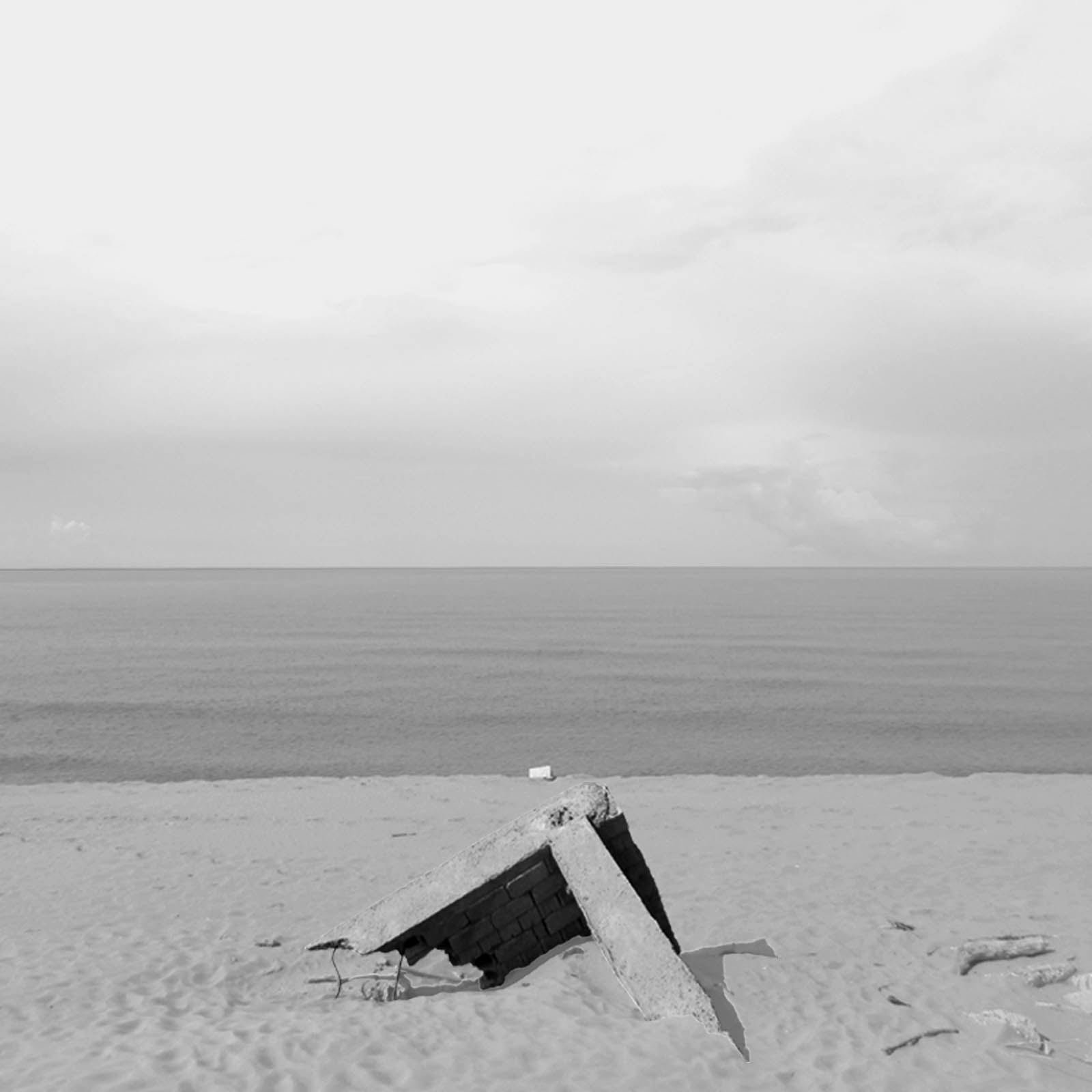 Η παράκτια ζώνη του νομού Ηλείας κυρίως από το Κατάκολο και για περίπου 20 χιλιόμετρα νοτιότερα αποτελεί από τα πιο αντιπροσωπευτικά παραδείγματα αυθαίρετης δόμησης για την κατασκευή παραθεριστικών καταλυμάτων στην Ελλάδα, με την αυθαίρετη εγκατάσταση στην περιοχή να έχει τη δική της ιστορία.
Η παράκτια ζώνη του νομού Ηλείας κυρίως από το Κατάκολο και για περίπου 20 χιλιόμετρα νοτιότερα αποτελεί από τα πιο αντιπροσωπευτικά παραδείγματα αυθαίρετης δόμησης για την κατασκευή παραθεριστικών καταλυμάτων στην Ελλάδα, με την αυθαίρετη εγκατάσταση στην περιοχή να έχει τη δική της ιστορία.
Η εγκατάσταση αυτή ξεκίνησε δειλά δειλά και έχοντας προσωρινό χαρακτήρα. Οι παραθεριστές, κάτοικοι της περιοχής, χρησιμοποιώντας υλικά ευτελή και με περιορισμένη διάρκεια ζωής κατασκεύαζαν καλύβες, οι οποίες στήνονταν στην αρχή του καλοκαιριού και ξεστήνονταν στο τέλος των διακοπών. Σιγά σιγά όμως, με το πέρας του χρόνου τα ευτελή και ελαφριά υλικά αντικαταστάθηκαν από ανθεκτικότερα προσδίδοντας στις κατασκευές έναν μονιμότερο και άφθαρτο, από το χρόνο και τη φύση, χαρακτήρα.
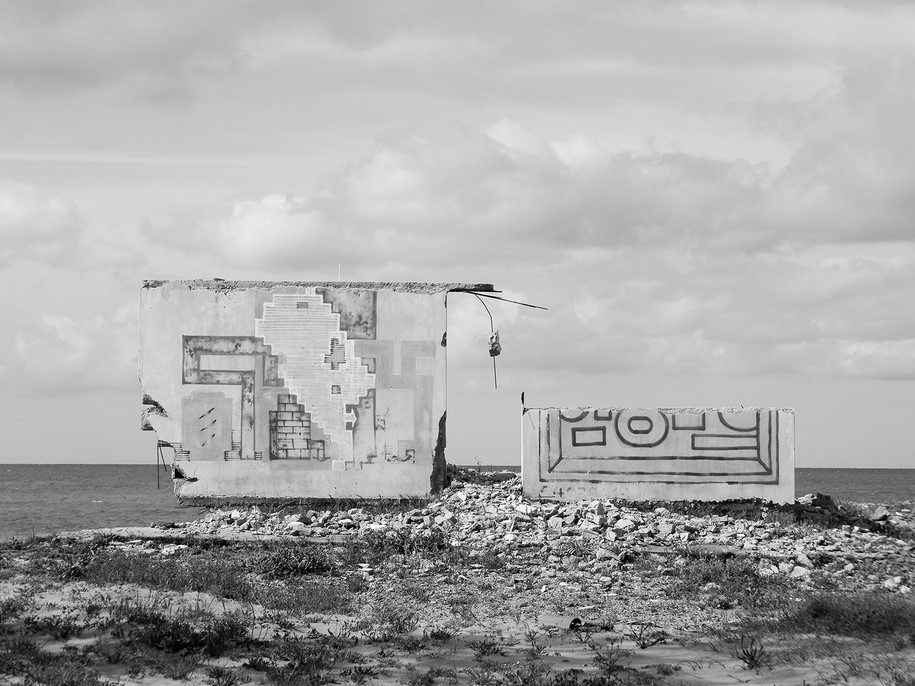 Εντούτοις, ο κύκλος ζωής που κάποτε χαρακτήριζε τα προσωρινά καταλύματα, χαρακτηρίζει τώρα τα μόνιμα κτίσματα της παραλίας. Χρόνο με το χρόνο, η θέση της ακτογραμμής μεταβάλλεται διαρκώς και η θάλασσα «βαίνει» έξω, τείνοντας να καταλάβει την αμμώδη παραλία. Πολλά παραθεριστικά καταλύματα έχουν καταστραφεί, ενώ πολλά κινδυνεύουν να αφανιστούν στο άμεσο μέλλον, αφού η φύση φαίνεται πως αντιστέκεται στην άστοχη ανθρώπινη παρέμβαση.
Εντούτοις, ο κύκλος ζωής που κάποτε χαρακτήριζε τα προσωρινά καταλύματα, χαρακτηρίζει τώρα τα μόνιμα κτίσματα της παραλίας. Χρόνο με το χρόνο, η θέση της ακτογραμμής μεταβάλλεται διαρκώς και η θάλασσα «βαίνει» έξω, τείνοντας να καταλάβει την αμμώδη παραλία. Πολλά παραθεριστικά καταλύματα έχουν καταστραφεί, ενώ πολλά κινδυνεύουν να αφανιστούν στο άμεσο μέλλον, αφού η φύση φαίνεται πως αντιστέκεται στην άστοχη ανθρώπινη παρέμβαση.
Τα υλικά που άλλοτε θεωρούνταν ανθεκτικά, φθείρονται και καταστρέφονται, όντας αδύναμα να επιβιώσουν μπροστά στις δυνάμεις της φύσης.
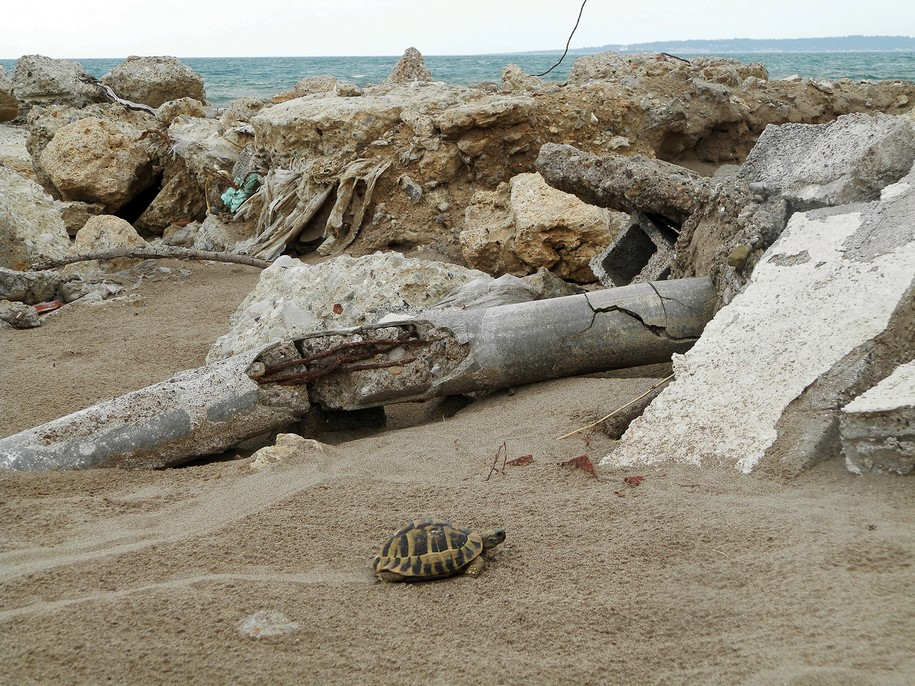
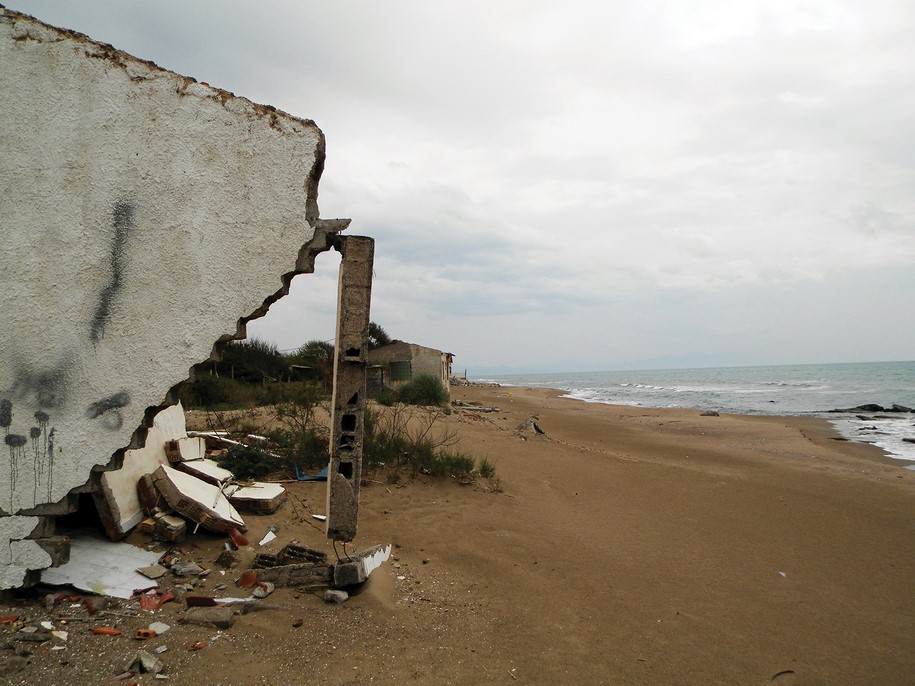 Η έρευνα διεξάγεται παράλληλα σε δύο ταχύτητες και δύο κλίμακες παρατήρησης που μας μετατοπίζουν από την ακτογραμμή, στην ακτή, στην παραλία και στα ξεχωριστά κελύφη που βρίσκονται πάνω στην άμμο, με καθέναν από τους τόπους αυτούς να αναδύουν διαφορετικά ζητήματα για μελέτη.
Η έρευνα διεξάγεται παράλληλα σε δύο ταχύτητες και δύο κλίμακες παρατήρησης που μας μετατοπίζουν από την ακτογραμμή, στην ακτή, στην παραλία και στα ξεχωριστά κελύφη που βρίσκονται πάνω στην άμμο, με καθέναν από τους τόπους αυτούς να αναδύουν διαφορετικά ζητήματα για μελέτη.
Το βλέμμα μετατοπίζεται από την αφ’ υψηλού θέαση μέσω της χρήσης του δορυφόρου, στη θέαση από μέσα με βιωματικό τρόπο, καθώς και στη μεταξύ τους σχέση, μελετώντας την ίδια συνθήκη με δύο διαφορετικούς τρόπους, αυτή της επικράτησης του φυσικού στοιχείου έναντι του τεχνητού, ενώ συγχρόνως αναπτύσσονται διάλογοι ανάμεσα στην τέχνη και την αρχιτεκτονική.
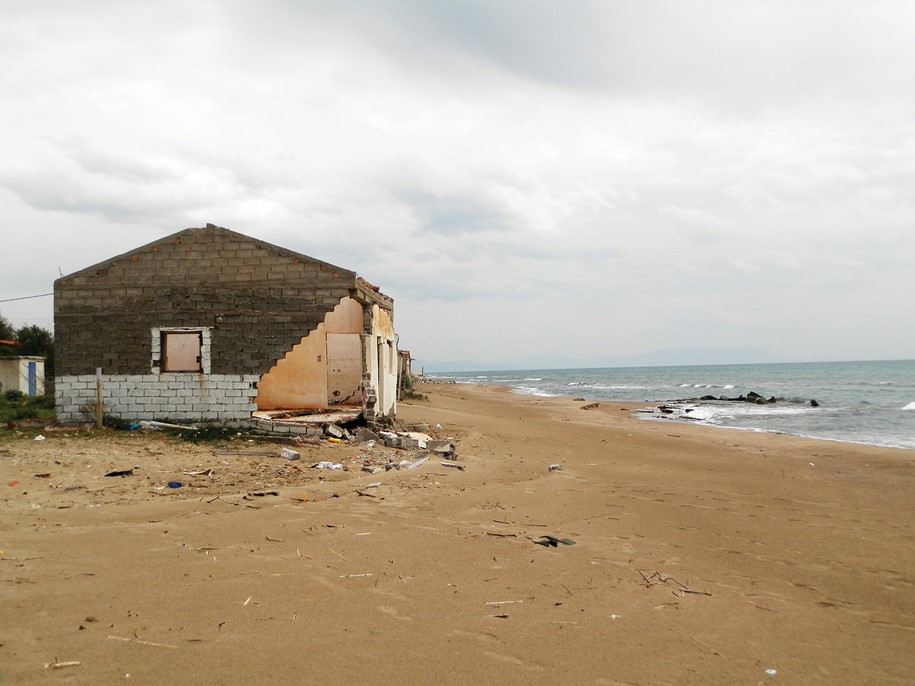 Διεξάγεται έρευνα σχετικά με την ιστορία της παραλίας της Σπιάτζας και τους λόγους που οδήγησαν στην κατάληψη της παραλίας από ευτελείς καλύβες σε μονιμότερες κατασκευές, ενώ παράλληλα διεξάγεται επιτόπια έρευνα στην παραλία, αποτυπώνοντας σε ένα πλέγμα μετατοπίσεων και παραπομπών, στοχασμούς σχετικά με τη φύση, το τοπίο, τις σχέσεις που αναπτύσσονται μεταξύ του φυσικού και του τεχνητού, αλλά και την έννοια του χτισίματος, της αυθαίρετης δόμησης και του ερειπίου.
Διεξάγεται έρευνα σχετικά με την ιστορία της παραλίας της Σπιάτζας και τους λόγους που οδήγησαν στην κατάληψη της παραλίας από ευτελείς καλύβες σε μονιμότερες κατασκευές, ενώ παράλληλα διεξάγεται επιτόπια έρευνα στην παραλία, αποτυπώνοντας σε ένα πλέγμα μετατοπίσεων και παραπομπών, στοχασμούς σχετικά με τη φύση, το τοπίο, τις σχέσεις που αναπτύσσονται μεταξύ του φυσικού και του τεχνητού, αλλά και την έννοια του χτισίματος, της αυθαίρετης δόμησης και του ερειπίου.
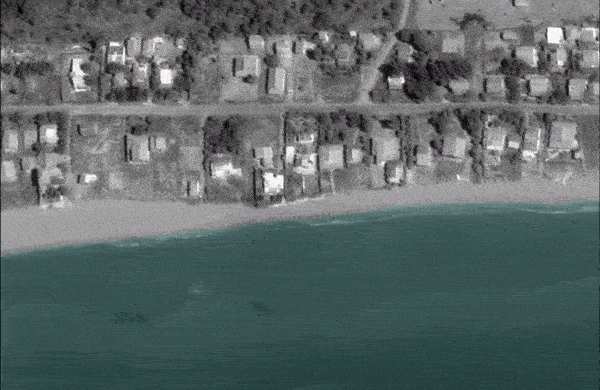
Το εμπειρικό υλικό το προσφέρουν τα κουφάρια κτιρίων που βρίσκονται στην άμμο, τα οποία δημιουργούν ένα δυναμικό σκηνικό πάνω στο αμμώδες τοπίο της παραλίας της Σπιάτζας.
Στοιχεία
Τίτλος εργασίας SPIAGGIA: Μετατοπίσεις του βλέμματος στις σχέσεις φυσικού και τεχνητού
Φοιτήτρια Βασιλική Λιανού
Επιβλέποντες καθηγητές Έβελυν Γαβρήλου, Αλέξανδρος Ψυχούλης
Σχολή Τμήμα Αρχιτεκτόνων Μηχανικών του Πανεπιστημίου Θεσσαλίας
Ημερομηνία παρουσίασης 21 Σεπτεμβρίου 2017
Original full text in Greek – Διαβάστε όλη της εργασία εδώ
READ ALSO: Nautical Park οf Ioannina | Thesis by Dimitra Maltezou